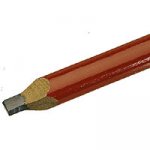How would one go about sensing 25 DIFFERENT levels ? The probes can be just stainless welding wire for instance for resistivity or voltage drop etc. The fluid to be monitored is conductive.
The problem is tying all these inputs into the controller circuit, maybe through a "multiplexer" arangement or something. The controller must react maybe when 2 levels are low (start small pump) or even with 1 level low. I'm sure on the logic yet.
I can use a 28x1 or 40x1 in the circuit, I also have 5x 08M's. I'm a bit stumped....
The problem is tying all these inputs into the controller circuit, maybe through a "multiplexer" arangement or something. The controller must react maybe when 2 levels are low (start small pump) or even with 1 level low. I'm sure on the logic yet.
I can use a 28x1 or 40x1 in the circuit, I also have 5x 08M's. I'm a bit stumped....
Last edited:

